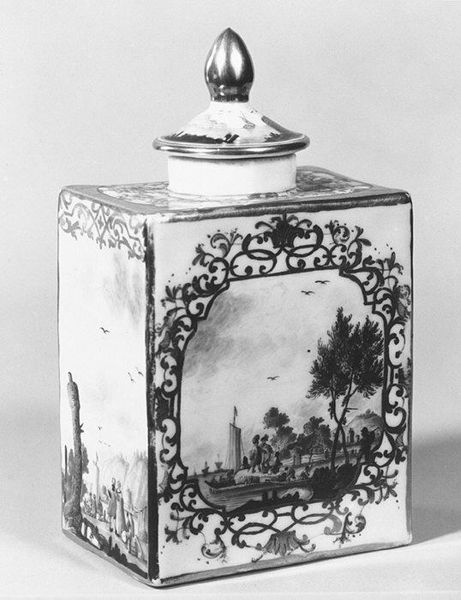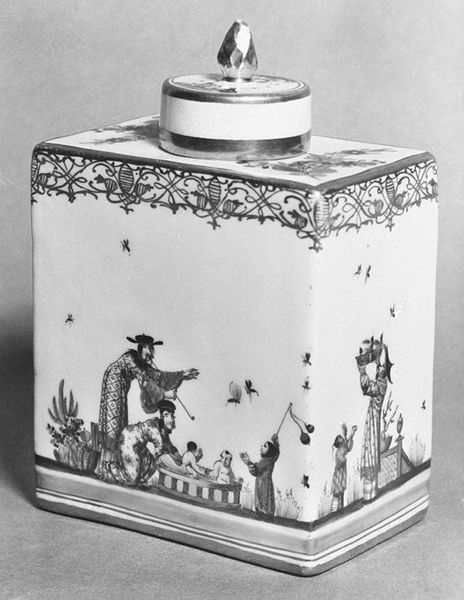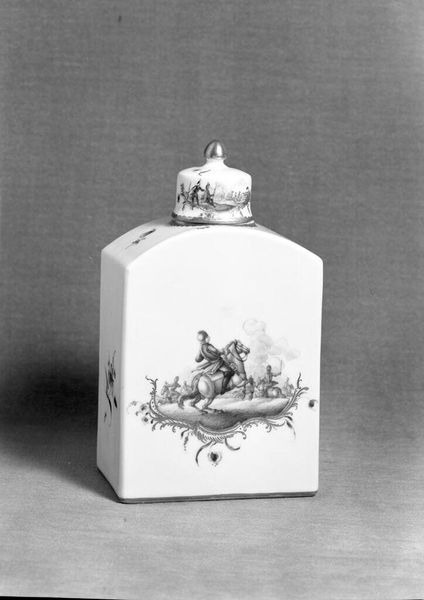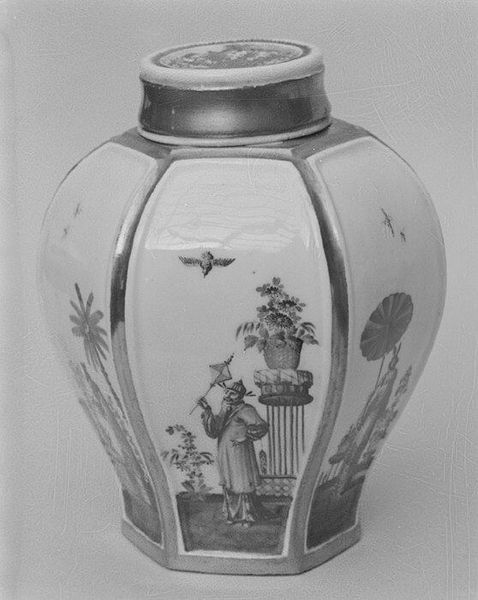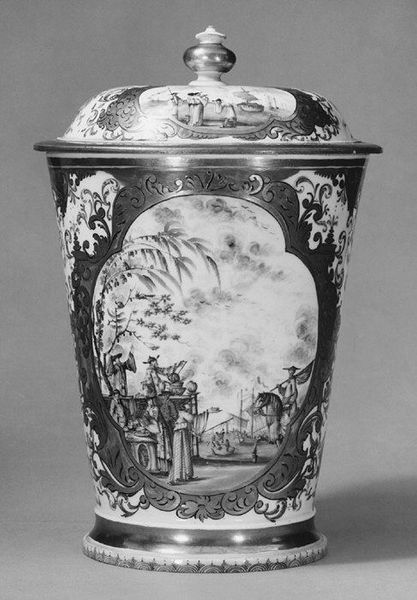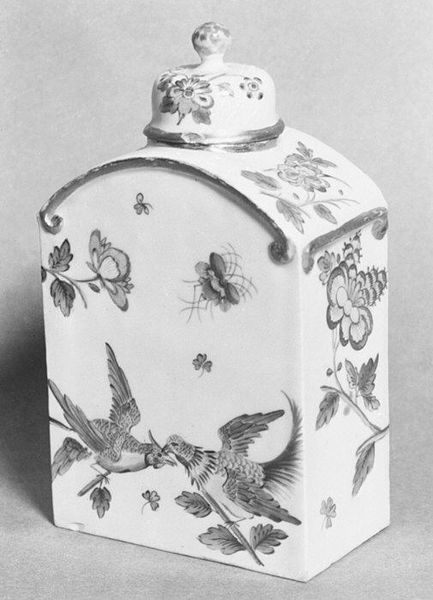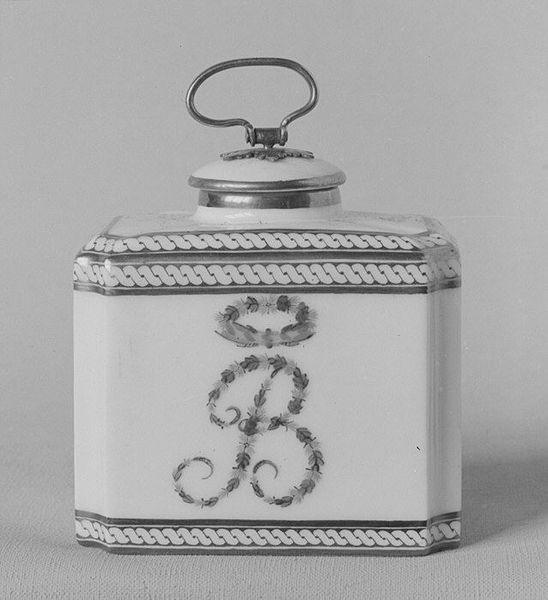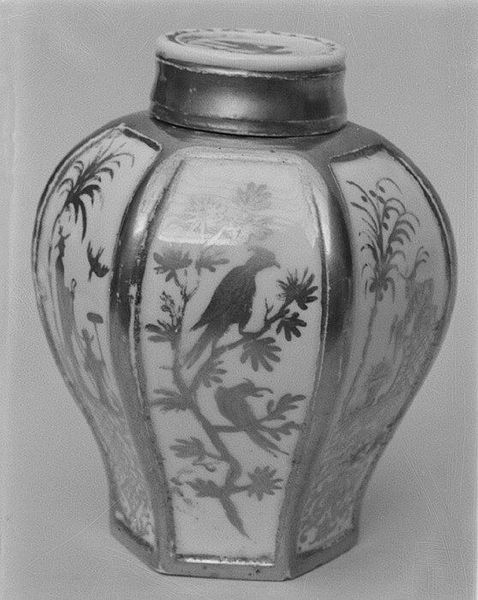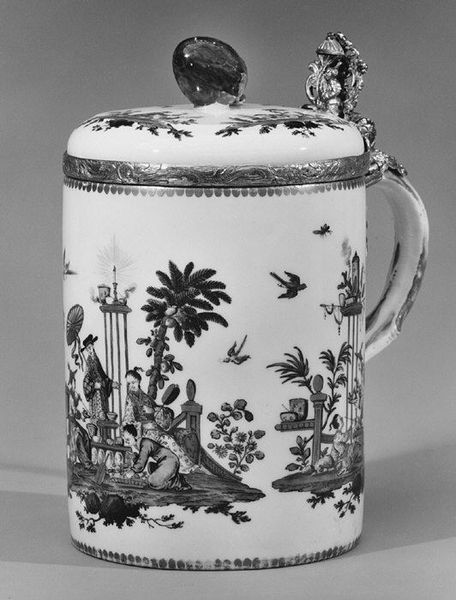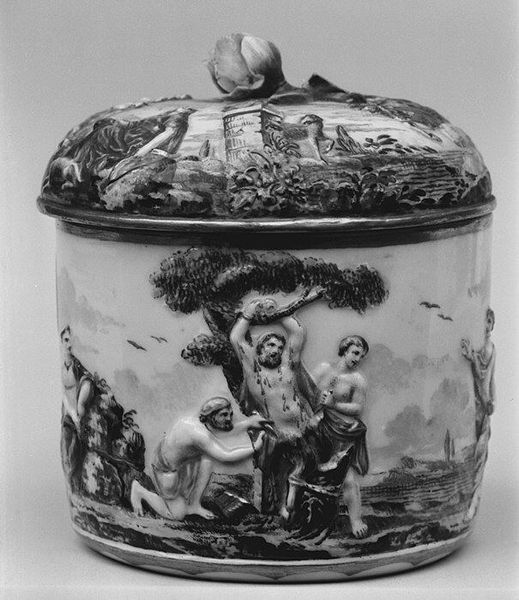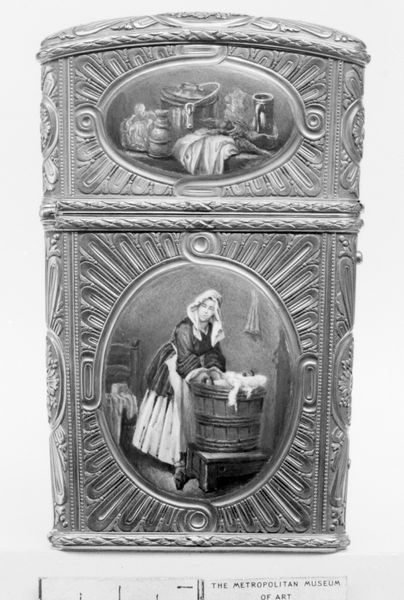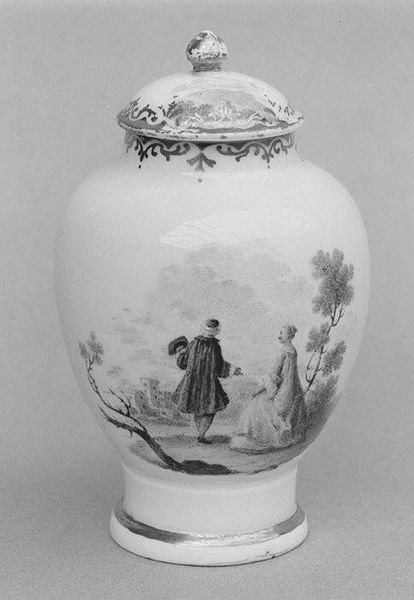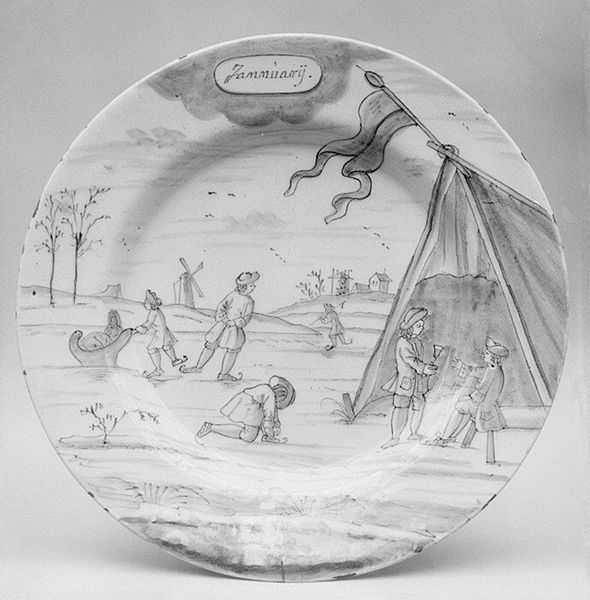
painting, ceramic, porcelain, sculpture
#
ornate
#
baroque
#
painting
#
landscape
#
ceramic
#
bird
#
porcelain
#
sculpture
#
decorative-art
Dimensions: Height: 4 1/8 in. (10.5 cm)
Copyright: Public Domain
Curator: This exquisite "Tea Caddy" crafted between 1735 and 1745 by the Meissen Manufactory, now residing at the Metropolitan Museum of Art, is a beautiful example of Baroque decorative art. Editor: It's strikingly monochrome, isn't it? Gives it an antique, almost ghostly feel, like a scene from a faded dream. The painted landscapes wrapping around the form… they’re like snippets of memory. Curator: Absolutely. Meissen porcelain was, at the time, the height of luxury. The painted scenes evoke a romantic sensibility – think trading routes, merchant harbors. Editor: I’m immediately drawn to the miniature dramas playing out on each side. Figures gesturing, birds in flight… all framed with an ornate border. It's not just holding tea; it's telling a story, or fragments of several. Curator: Porcelain, more than just a functional object, held symbolic weight – signifying status and refinement. These depictions can reveal anxieties and desires about global exploration, transformed into this lovely objet d'art. Editor: And isn’t there something poignant about taking something like porcelain—associated with delicacy, even fragility—and decorating it with these scenes of robust, masculine trade and exploration? The contrast feels deliberate. Curator: Perhaps the fragility acts as a caution. Trade can be profitable but treacherous. Also consider that the act of drinking tea itself was something of a ritual, connecting people across geographical and cultural divides. Editor: Right. This unassuming box is actually layered. More than it appears to be. Considering all the scenes on this porcelain sculpture I now sense both beauty and anxiety—that combination, maybe that's the essence of its charm? Curator: Yes, this “Tea Caddy” serves as an ornate time capsule – holding flavors, but also the narratives and nuanced views of its own gilded age. It invites us to brew not just tea, but new meanings from history's fragrant leaves.
Comments
No comments
Be the first to comment and join the conversation on the ultimate creative platform.
